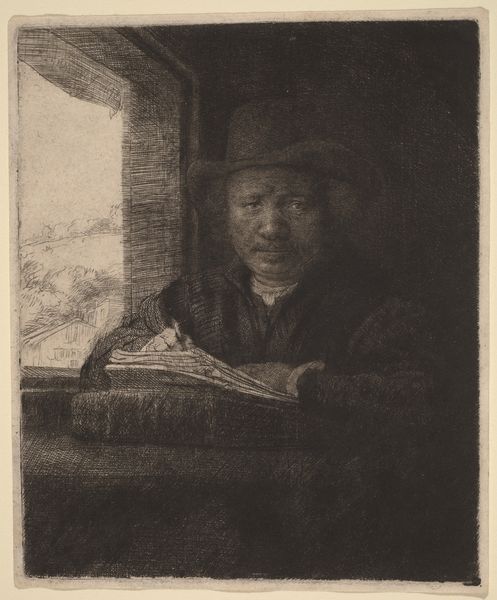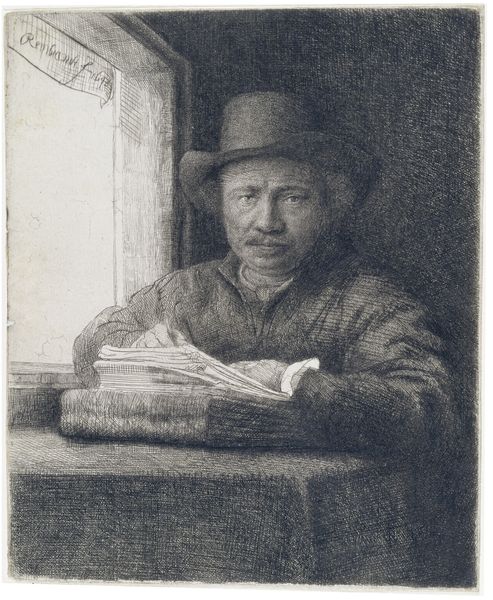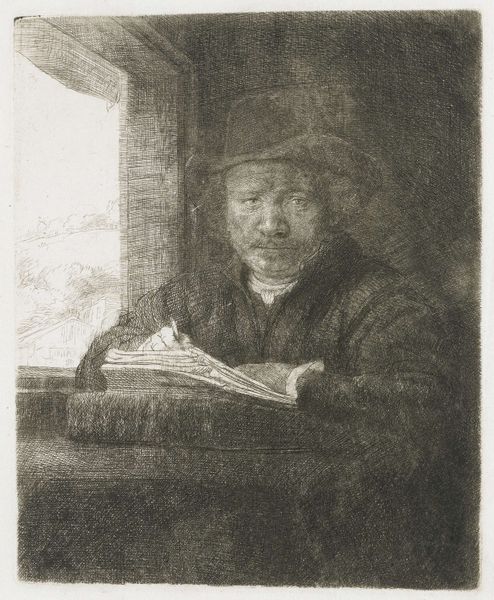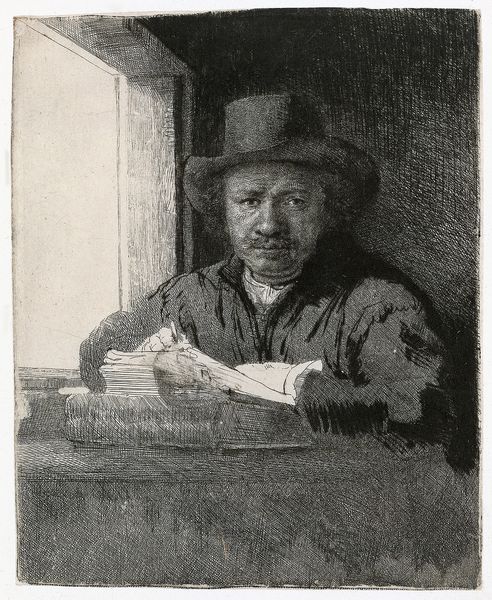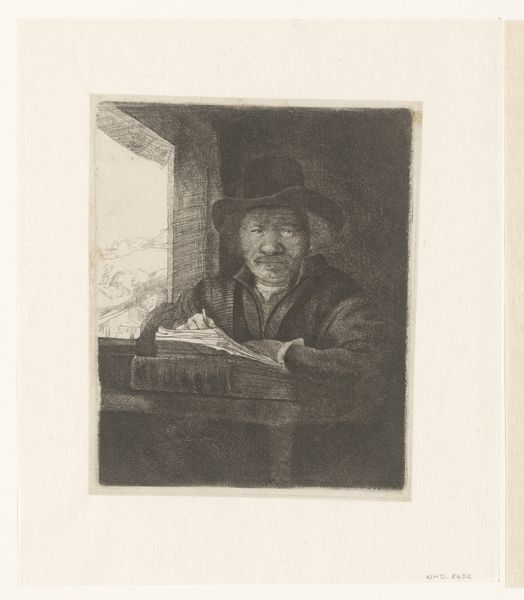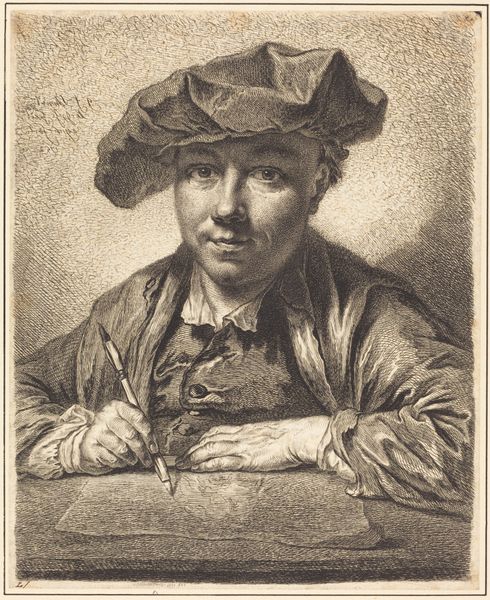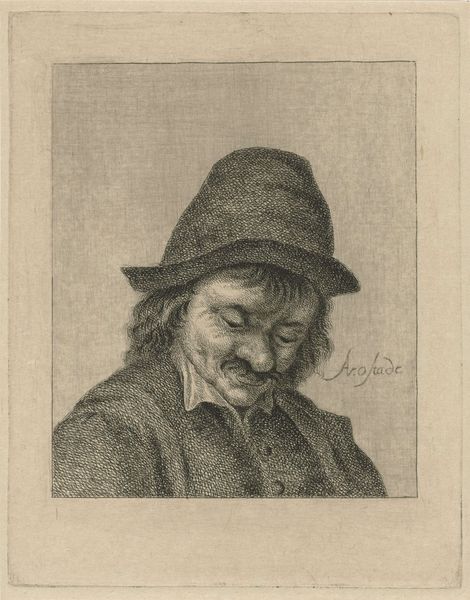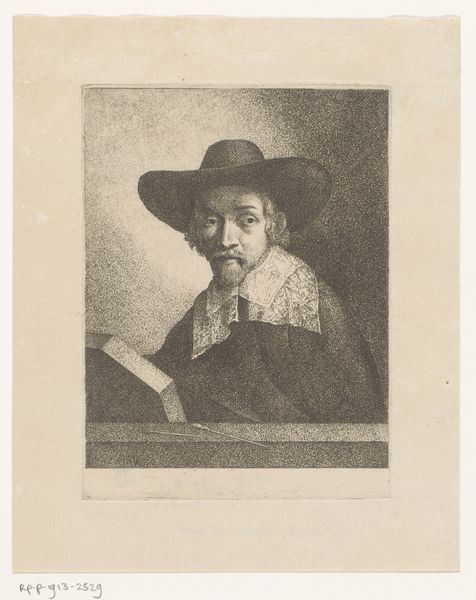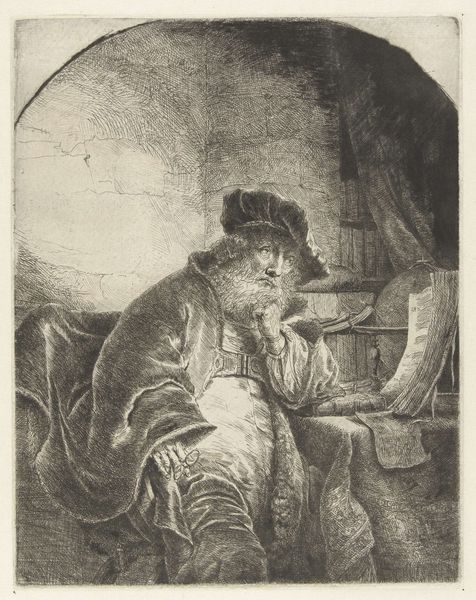
drawing, print, etching
portrait
drawing
self-portrait
baroque
etching
charcoal drawing
portrait reference
pencil drawing
portrait drawing
Dimensions: sheet (trimmed within plate mark): 15.9 x 13 cm (6 1/4 x 5 1/8 in.)
Copyright: National Gallery of Art: CC0 1.0
Curator: Here we have Rembrandt van Rijn's "Self-Portrait Drawing at a Window," created in 1648. It’s an etching. Editor: Immediately, I’m struck by the sense of introspection. The stark contrasts between light and shadow and the palpable sense of being in that moment with him, and also the presence of the drawing itself. Curator: Indeed. The strategic deployment of light isn't just illumination, but a crucial element that sculpts the form and guides our perception, doesn’t it? Look at how it defines the planes of his face, contrasting the lit side with the obscurity. The tonal gradations produce a fascinating chiaroscuro effect. Editor: And that leads me to the physical labor of producing such a print. I wonder about the workshop, the hours spent hunched over the plate, etching with such precision, the cost of materials at the time. This wasn't a quick sketch; it's the result of thoughtful work. Also, what he's working on must be of vital importance, even being presented along with him in a self portrait, perhaps even more important. Curator: Certainly. Furthermore, the composition of line and shape create a visual harmony that's hard to ignore. Notice how Rembrandt uses the window frame as a framing device itself, not just to enclose but to lead our focus back into the portrait, creating a loop that implicates the viewer. Editor: Yes, this adds layers to how we consider this image as artifact and object; this could have been an expensive project in itself to make such self portraits and disseminate the image. In terms of use value, the cost and material processes elevate Rembrandt's status as a prolific master. Curator: And in a psychological space. As the viewer we have been invited into Rembrandt's inner world as well, with its complexity made accessible through his profound draftsmanship. The formal dynamics in play are central to achieving this connection. Editor: Absolutely. When viewing it with the understanding of the work that went into it, the materials, the labour, we must ask if this makes a better, richer, and deeper visual understanding of his artwork. It challenges a sense of pure visual interpretation without these contextualizations. Curator: These considerations undoubtedly enhance our interpretive perspective, prompting a richer understanding that engages our minds and invites personal responses. It makes me look even deeper into the lines of the print itself. Editor: Exactly. Understanding art in this manner provides access to new facets of its meanings, extending a visual narrative beyond conventional bounds and inspiring diverse modes of understanding. I find I am now thinking beyond his craft in 1648, into the ways his image remains present today.
Comments
No comments
Be the first to comment and join the conversation on the ultimate creative platform.

